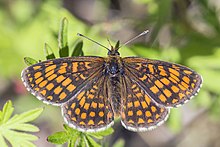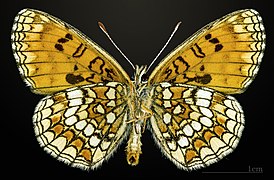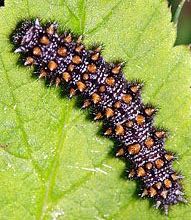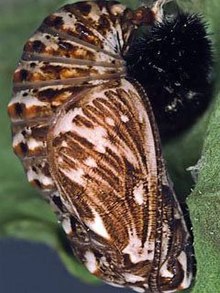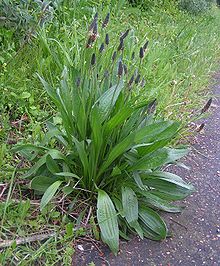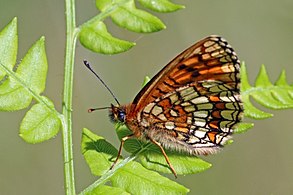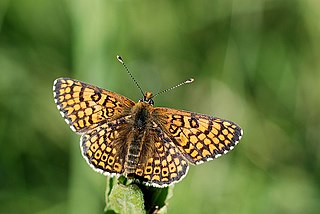List - Melitaea albaRehfous, 1905
- Melitaea aquilariQuerci, 1932
- Melitaea athalia subsp. aphaea(Hübner, 1816)
- Melitaea athalia subsp. pyronia(Hübner, 1804)
- Melitaea athaliavon Rottemburg, 1775
- Melitaea bifasciataReverdin, 1914
- Melitaea cinnamomeaVorbrodt & Müller-Rutz, 1917
- Melitaea cinxiodictynnoidesStauder, 1922
- Melitaea commaculaCaruel, 1944
- Melitaea conicaMatsumura, 1929
- Melitaea csikiiAigner-Abafi, 1906
- Melitaea demarginataCaruel, 1944
- Melitaea dictynnaesimilisVerity, 1930
- Melitaea fallaxHormuzaki, 1925
- Melitaea flavescensMatsumura, 1929
- Melitaea flavoelongataCaruel, 1944
- Melitaea fullaQuensel, 1791
- Melitaea funestaStauder, 1922
- Melitaea indignaCabeau, 1922
- Melitaea latonigenaSpuler, 1901
- Melitaea leucophanaCabeau, 1912
- Melitaea ligataCaruel, 1944
- Melitaea melaninaHerrich-Schäffer
- Melitaea mirabilisFernández, 1929
- Melitaea mirefasciataCabeau, 1923
- Melitaea molpadiaVarin, 1933
- Melitaea navarinade Selys-Longchamps, 1837
- Melitaea nigrathaliaJohnstone, 1944
- Melitaea nigrobellaRocci, 1942
- Melitaea nigropunctataCaruel, 1944
- Melitaea norvegicaAurivillius, 1888
- Melitaea obsoletaTutt, 1896
- Melitaea phyciodinaHormuzaki, 1934
- Melitaea poedotrophosBergstrasser, 1780
- Melitaea postdivergensRocci, 1930
- Melitaea postfuscofasciataGoodson, 1960
- Melitaea progressivaKsenzhopol'sky, 1911
- Melitaea pseudodelminiaVerity, 1940
- Melitaea radiataEisner, 1942
- Melitaea retyezaticaDiószeghy, 1930
- Melitaea sohanaCabeau, 1922
- Melitaea spadanaCabeau, 1922
- Melitaea submaximaVerity, 1924
- Melitaea subtusnigrescensCaruel, 1944
- Melitaea tectensisCabeau, 1922
- Melitaea tessellataStephens, 1827
- Melitaea transitoriaEisner, 1942
- Melitaea tricolorHormuzaki, 1897
- Melitaea unifasciataCaruel, 1944
- Melitaea virgataTutt, 1896
- Mellicta aphaeaHübner
- Mellicta athalia subsp. athalia
- Mellicta athalia subsp. norvegica (Aurivillius, 1888)
- Mellicta corythalliaHübner, 1790
- Mellicta dorfmeisteriHellweger, 1911
- Mellicta herthaQuensel, 1791
- Mellicta neglectaPfau, 1962
- Mellicta nigriorneaLempke, 1955
- Mellicta nigromarginataLempke, 1955
- Mellicta reticulataHiggins, 1955
- Mellicta samonicaRiesen, 1891
- Papilio athaliaRottemburg, 1775
- Papilio eosHaworth, 1803
- Papilio leucippeSchneider, 1789
- Papilio pyroniaHübner, 1804
|
